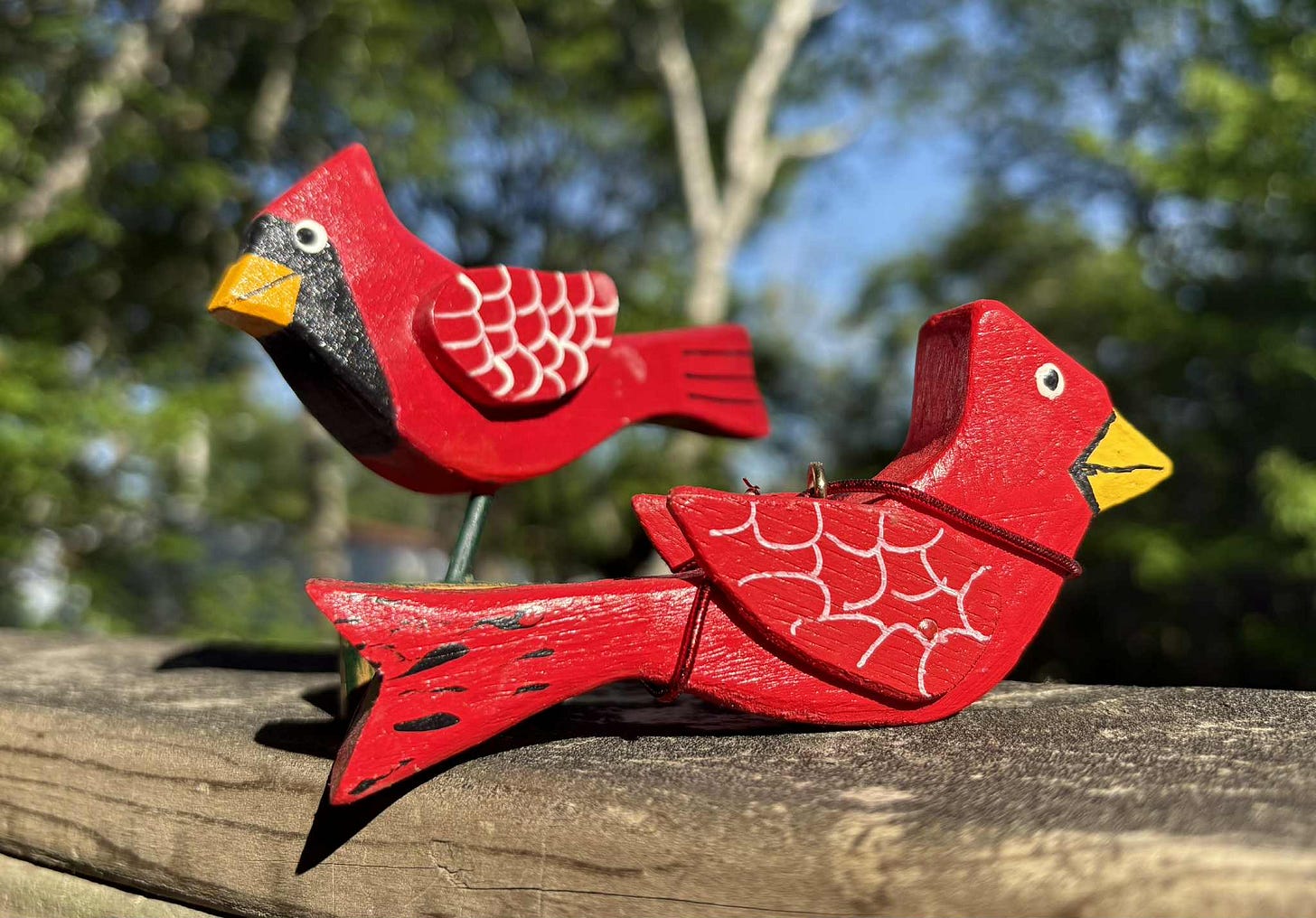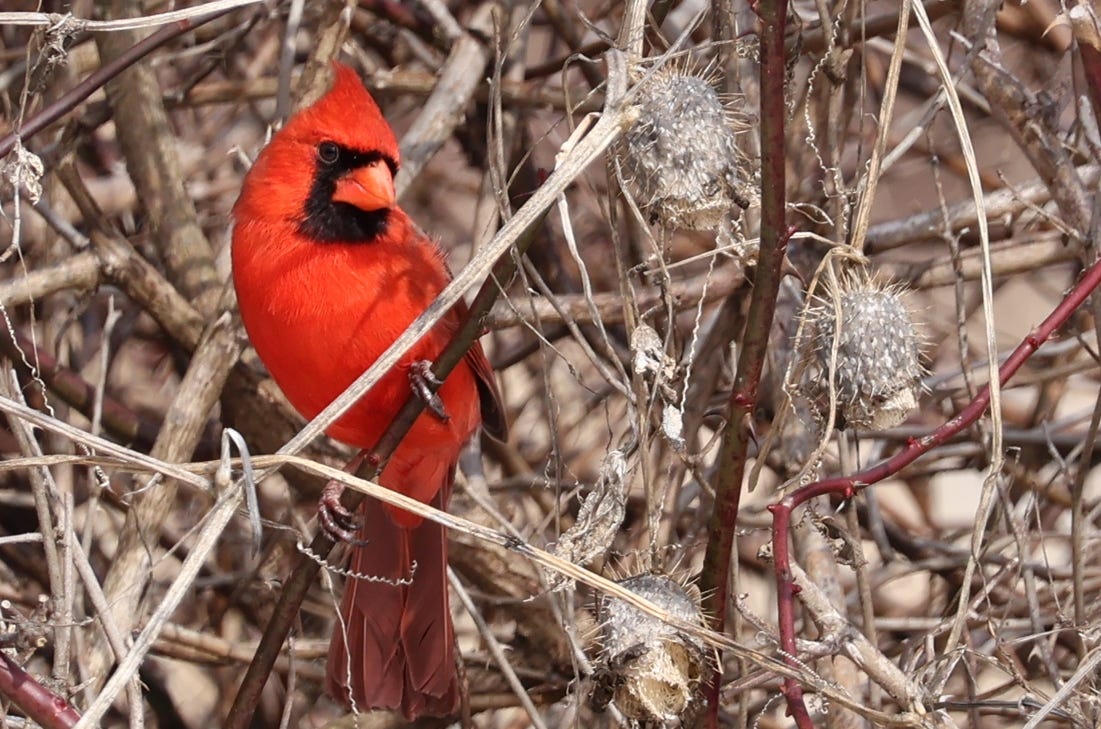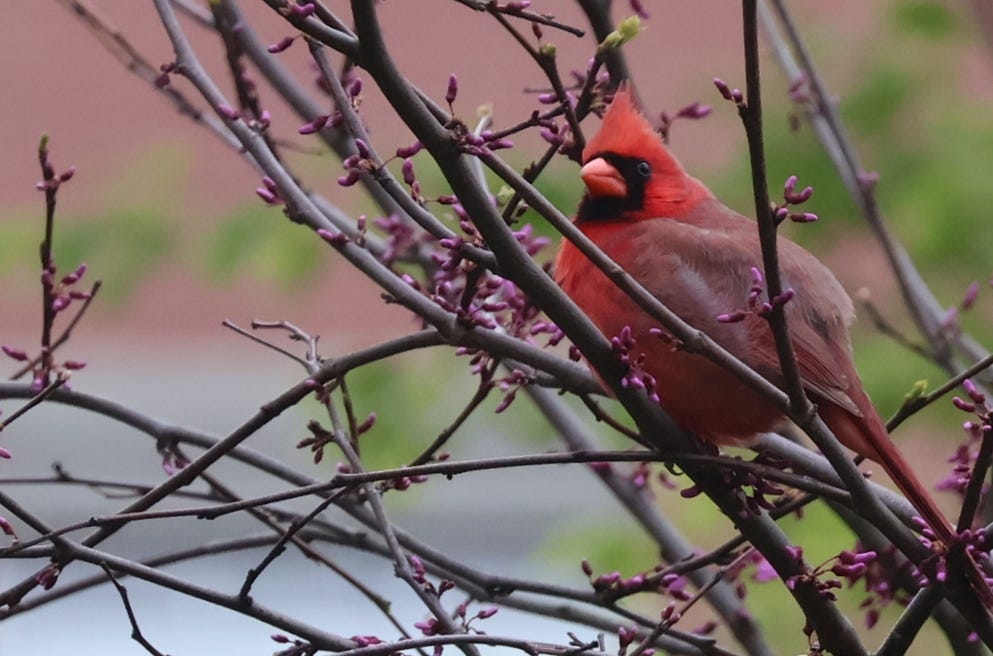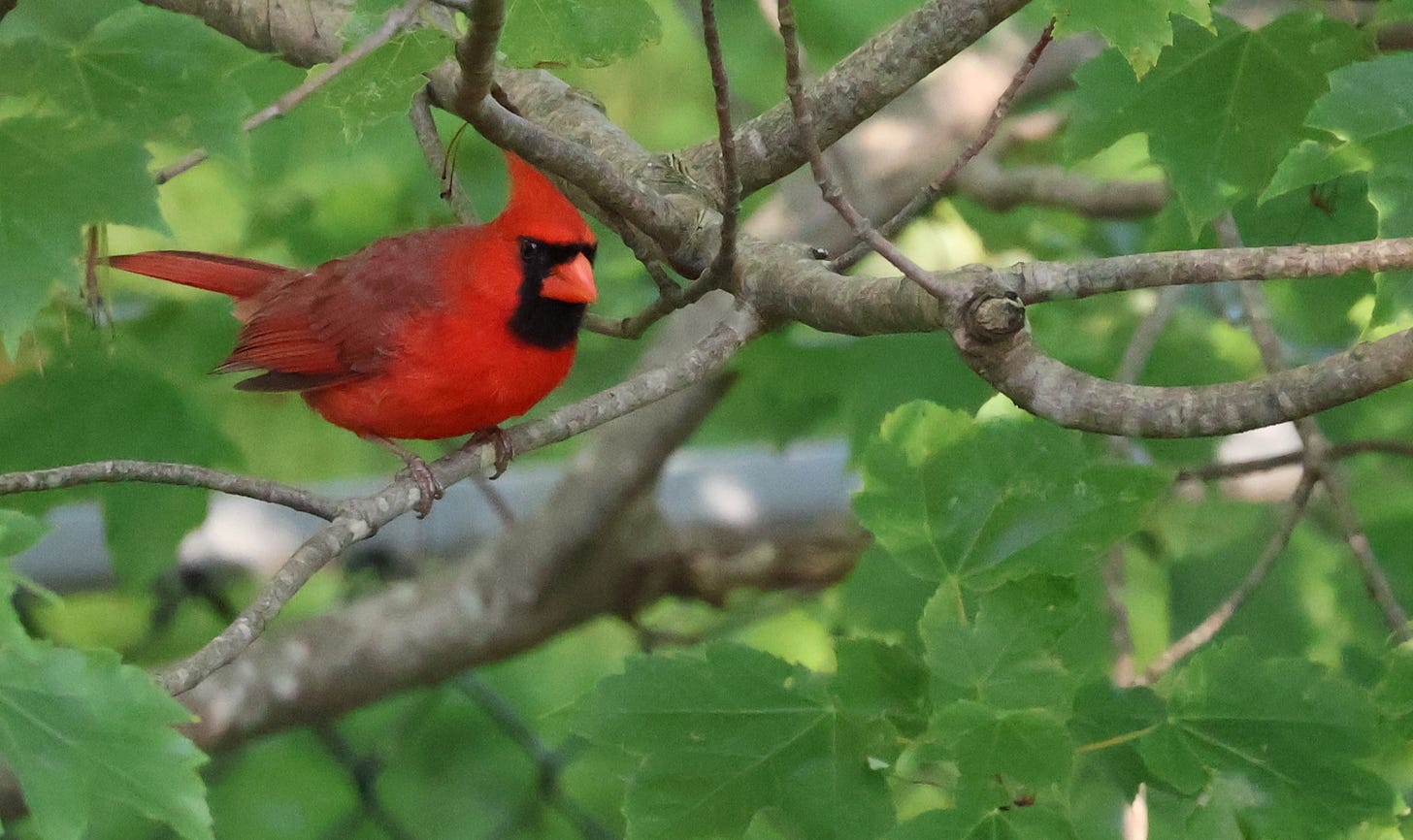Northern cardinals: Signs from the heavens and signs about our changing climate
The bright red plumage of male northern cardinals is a blessing and a warning.
One of the things I do most mornings after I feed my cats and put on the kettle for tea is open my back door, which overlooks the backyard. I live in a second-storey flat with a small back deck that offers a lovely view of the yard, the trees well beyond it, and into my neighbours’ yards (I’m not watching the neighbours, by the way).
Sometimes I have my camera in hand hoping to get a photo of whatever birds are in the yard that morning.
One day last week, I opened the door to see a bright red and handsome male cardinal sitting on the non-functioning clothesline that’s strung between a post of my back step and a maple tree at the back edge of the yard. I had my camera in hand and the cardinal sat on the clothesline long enough for me to get this photo. How fortunate I was that day.
Northern cardinals, especially the gorgeous and vibrant red male cardinals, are a local favourite among birders and I suspect may be the “spark” bird that encourage people to get into birding. Non-birders also appreciate a visit from a cardinal, which are often considered visitors from heaven. "When a cardinal appears, an angel is near,” so the saying goes.
Since I started birding about a year ago, I have received many bird-related gifts from people, including two northern cardinal decorations I keep on a shelf.
Northern cardinals live year-round in Nova Scotia where I reside and seeing them is always a delight. Their red plumage stands out like a Christmas tree ornament among the green leaves during the spring and summer months. The males stand out even more with a backdrop of freshly fallen white and fluffy snow.
Even on the quietest of birding days, I still see northern cardinals, including in the Halifax Public Gardens and city cemeteries, which seems appropriate for a bird considered to be an angel from above.
One of my favourite spots to find northern cardinals is in Miner’s Marsh, a lovely wetland habitat in the Annapolis Valley town of Kentville. The male northern cardinals in that park sometimes make a show of themselves either singing from a tree top or flittering among the leafless shrubs during the winter months. This handsome northern cardinal greeted me at the park this past March. I swear this coy bird was enjoying me taking his photograph.
Apparently, European settlers to North America named cardinals after Roman Catholic cardinals, the church’s senior clergy that wear bright red robes and serve as advisors to the pope. I like to think that northern cardinals had the look first.
The name was changed to northern cardinals by the American Ornithologist's Union in 1982. Northern cardinals have had other names over the centuries, including common cardinal, cardinal grosbeak, red-bird, and top-knot redbird.
While their plumage isn’t as bright, female cardinals are equally as gorgeous, although I rarely see one too close to my house. This one in the photo below made a visit to my yard once, perhaps the mate of the male northern cardinal I saw recently.
With their light brown plumage tinged with pinkish-red hues on the tips of its crest, wings, and tail, I like to think of female cardinals like Roman Catholic nuns in their habits that are plainer than those of the cardinals, but whose roles are equally important, regardless of what church doctrine says.
The sight of northern cardinals wasn’t so common in all over Nova Scotia and the birds are heading further north these days. This map of the northern cardinals’ range shows that the birds don’t go much further north than the northern coastlines of Nova Scotia.
Yet according to this map of sightings from 2020 to 2025, the northern cardinals can be seen much further, including into Newfoundland and Labrador and even into northern Alberta. Some folks in local bird Facebook group say they are now seeing the red birds as far north as Cape Breton, which was unheard of until recently.
According to this CBC article from 2022, there was an “eruption” of northern cardinals in Sudbury in Ontario that year. Previously, sightings of cardinals were more common in the southern part of that province. Amy Henson, a senior staff scientist with Science North, told CBC it’s likely climate change and habitat loss that are driving the cardinals north.
Fortunately, for birders and anyone who loves the sight of a northern cardinal, the species is not globally threatened. This Cornell Lab Birds of the World website shows how human activity has shaped the northern cardinals’ range. From the website:
The Northern Cardinal has benefited from human alteration of environments throughout most of their range. By converting forests to agricultural and suburban areas, and supplying food at winter feeders, human development has increased nesting habitat and enabled the species to remain during winter in areas not suitable in the past. Winter feeding stations appeared to be important to maintain a small population in Nova Scotia. In Tucson, Arizona, data from the Winter Bird-Population Study and Breeding Bird Census reported densities of < 6–11 birds/km2 in undisturbed to moderately disturbed paloverde–saguaro (Cercidium–Carnegia gigantea) habitat, 10–40 birds/km2 in "exurban" and suburban habitat, and 5–42 birds/km2 in urban habitat. In Hawaii, after clearing of native rainforest, Northern Cardinal was among the first bird species to recolonize and occurred in higher abundances after disturbance than any native species.
I’ve seen that northern cardinal in my yard many times since that one fortunate morning when he landed on the clothesline. In fact, I saw him from a distance this morning, inspiring me to finish this essay, which I started a few days ago. I think there’s a nest in a lot behind my yard that’s filled with native trees and plants, a perfect place for native birds. I can also hear him singing just about every morning. Some of his calls sound like the pew-pew of laser guns. I joked once that it often sounds like bird Star Wars in my yard.
It’s always wonderful when I catch sight of him and even more wonderful when I get photos. If there’s an angel near, I wonder who it is? Perhaps it’s my late father who could also sing like a songbird and whose name, Kenneth, is Scottish for “handsome,” an adjective often used to describe male northern cardinals.
My father could build and fix anything, so maybe the northern cardinal landed on the broken clothesline that morning to remind me to ask my landlord to finally fix it.
And maybe the northern cardinals we’re all seeing more often are signs from the heavens that there’s still much to fix here on Earth. The question is, however, are we really listening?
Thank you for reading,
Crazy bird lady,
Suzanne











Beautiful. I love the link with your father and the question you ask at the end.